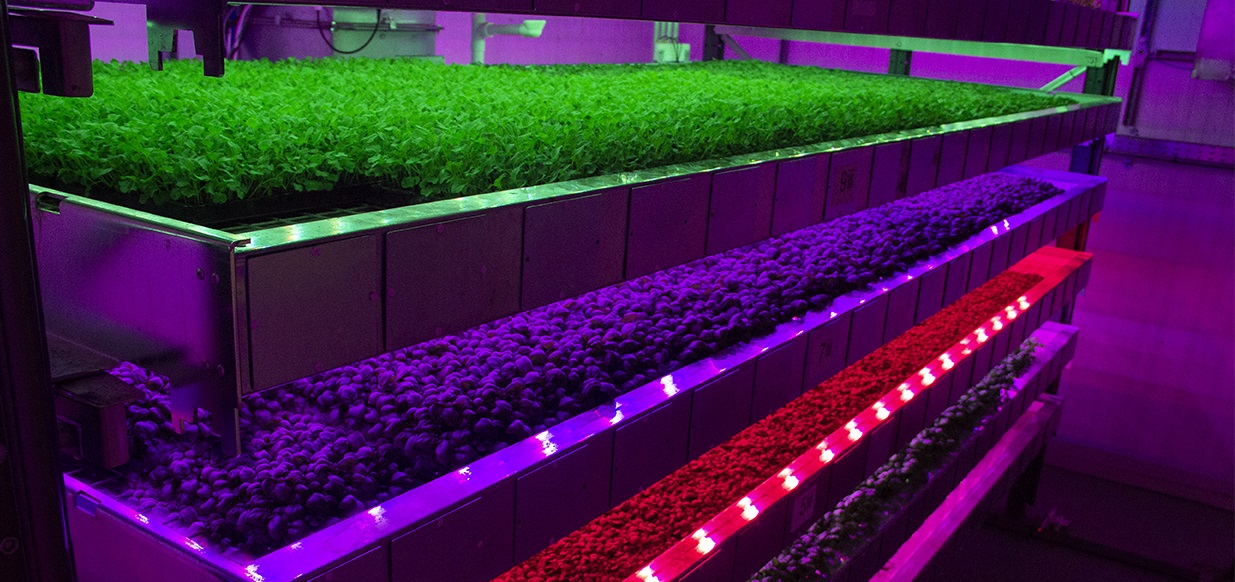As technology becomes an integral part of the agriculture industry, farmers are increasingly moving their growing operations indoors. The practice, known as both indoor and vertical farming, refers to crop growing in vertically stacked layers, inside contained spaces without outside environmental factors — which differentiates the practice from growing in greenhouses. Vertical farming allows for control over the growing environment, including light, temperature, air, water and soil quality. As more farmers and companies turn to this agtech solution, the industry is growing rapidly. How is the agriculture industry prepared to meet the needs of the booming market for agtech solutions related to vertical farming?
Industry potential
Jeffrey Landau, director of business development at Agritecture Consulting, told the BBC he estimates the value of the global vertical farming market will reach roughly $6.4 billion by 2023, compared with a market value of $403 million in 2013. This growth inevitably means more companies are cropping up to become the necessary support that growers need to successfully move their operations inside.
The catalyst for the industry’s current and future rapid expansion can be attributed to several factors. “Coupled with a greater focus from the international community to address food waste and deliver more sustainable methods of food production, there is a much greater level of awareness and positive interest in the potential posed by the indoor farming industry,” said David Farquhar, CEO of Intelligent Growth Solutions. IGS is a UK-based agtech startup that makes power and communications products designed to help vertical and indoor farmers cut energy use and labor costs.
Farquhar added that the bar for entry into the vertical farming industry is relatively simple; vertical farms need access to power, access to a water supply and the ability to get planning permission or to retrofit a site at least 40 feet tall. Growing requirements and conditions are vastly different than traditional agriculture, allowing for vertical farmers to break the mold and grow crops in new places. Farquhar noted IGS has worked with farmers and companies in urban, suburban and rural communities.
Sustainability
“The products are fresher, have a longer shelf life, and crop losses due to weather, disease, drought, or pests are effectively eliminated,” Farquhar said about the many benefits of indoor farming. “It also means we can grow healthier, more nutritious foods at economically viable prices.”. The method of growing food in vertical farms is highly efficient for producers, and its commitment to sustainable agriculture attracts consumers who are increasingly seeking out food that is made with the environment in mind.
While indoor farming has arisen to combat climate change while still securing a nutritious and plentiful food supply chain, indoor farming still requires the use of electricity-generated light. To address these concerns, IGS has created an Internet of Things-powered platform “designed to reduce energy consumption and compliment the power source to maximise productivity,” said Farquhar. He also asserted that IGS’s products can help produce 225% higher yields than glasshouse-produced agriculture, have the capability to reduce energy usage by 50% and to reduce labor costs by 80% — and do so without the use of pesticides.
Establishing infrastructure
The vertical farming industry’s growth not only calls for corporate support, it also needs established national and global infrastructure to advocate for the interests of the expanding industry. A forthcoming trade group is set to launch soon: the American Association for Urban and Vertical Farming, which will be affiliated with the global nonprofit Association for Vertical Farming, according to reporting by GreenBiz.
Another recognition of vertical farming’s new status in the agriculture industry is the 2018 Farm Bill created the Office of Urban Agriculture and Innovative Forms of Production, a federal agency tasked with promoting urban, indoor and other emerging agricultural production. The bill also established and will continue to fund the Urban, Indoor, and Other Emerging Agricultural Production Research, Education and Extension Initiative, a federal grant program to support research and education.
What’s next?
Clearly traditional agriculture isn’t disappearing in favor of vertical farming; rather agriculture is expanding through the use of new technologies to include indoor growing options. As the vertical farming market grows and reaches new parts of the globe, more agtech solutions will allow new groups of people to tap into indoor growing. Farquhar said his company plans to offer its systems in more parts of Europe, the Middle East and North America, with 95% of the company’s sales expected to be exports. Agtech solutions have allowed farming to move indoors, and the industry’s embrace of those solutions by creating supportive frameworks and organizations will continue to bolster the vertical farming market.
Related stories:
- The rise of natural winemaking means more accidentally vegan vintages
- Sustainability 2019: Evolving consumer priorities around purchasing and packaging
- Today’s more veggies, less meat culture: What’s behind the momentum into the mainstream?
_____________________________________
If you enjoyed this article, sign up for GMA SmartBrief or Restaurant SmartBrief to get news like this in your inbox, or check out all of SmartBrief’s food and travel newsletters as we offer more than 30 newsletters covering the food and travel industries from restaurants, food retail and food manufacturing to business travel, the airline and hotel industries and gaming.
